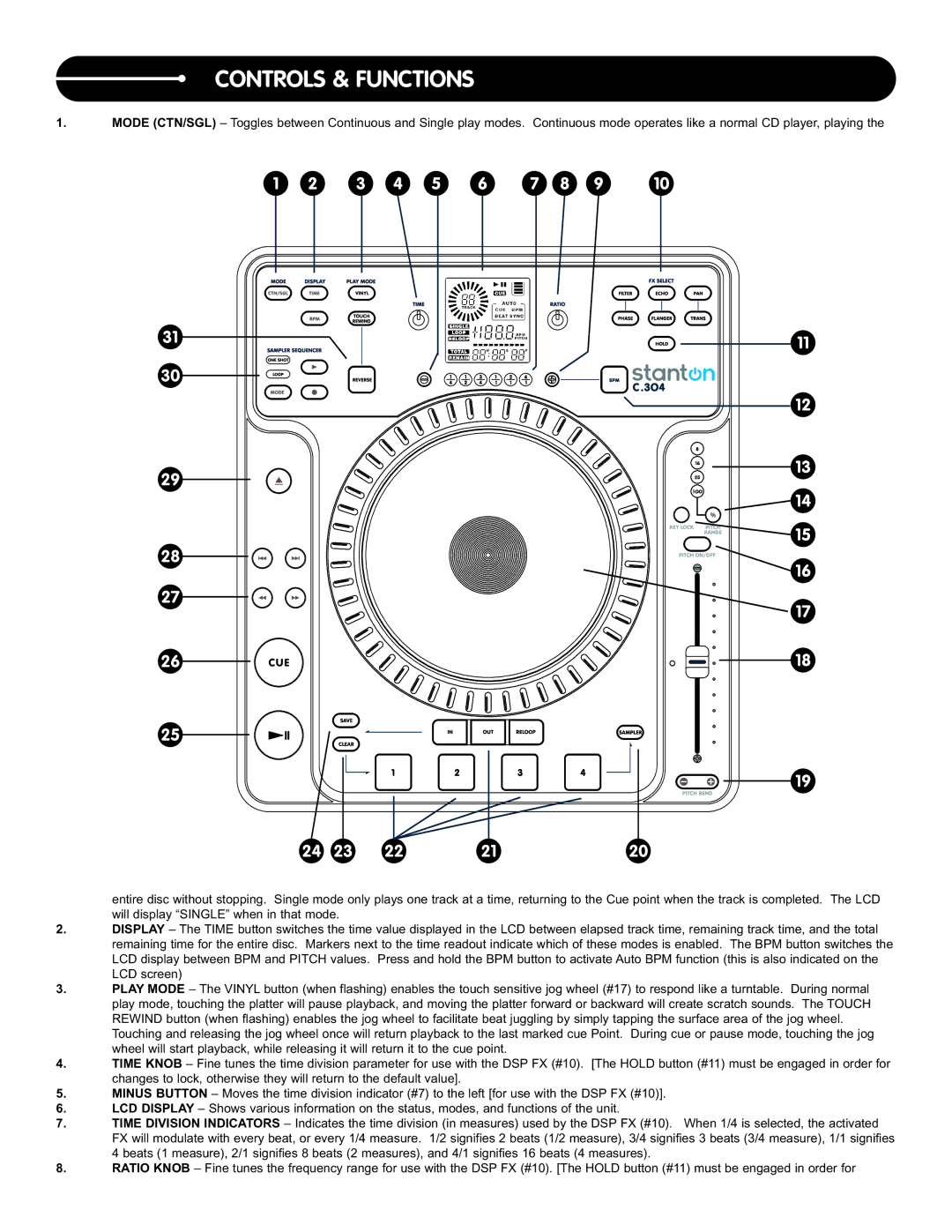C.304 specifications
The Stanton C.304 is a pioneering model in the realm of advanced signal processors, designed primarily for high-fidelity audio applications. With its cutting-edge technology and robust features, the C.304 stands out as an essential component for audiophiles and professional sound engineers alike.At the heart of the Stanton C.304 lies its powerful DSP (Digital Signal Processing) capabilities. This processor allows for real-time audio manipulation and enhancement, enabling users to achieve superior sound quality. The C.304 supports a wide range of audio formats, ensuring versatility in various audio environments, whether for live sound, studio recording, or broadcasting.
One of the most notable features of the C.304 is its comprehensive EQ (Equalization) settings. Users can access detailed control over frequency bands, allowing for the precise tuning of audio outputs. This feature is particularly advantageous in live sound applications, where room acoustics often dictate the need for tailored audio adjustments. The built-in presets and customizable EQ settings cater to diverse musical genres and preferences.
Additionally, the C.304 employs advanced dynamics processing technology, which includes compression, expansion, and gating functionalities. These tools are crucial for balancing audio levels and enhancing the overall sound dynamics. This ensures clarity and punchiness, which are essential for both vocal and instrumental tracks.
The unit also boasts a user-friendly interface, complete with an intuitive touchscreen display that simplifies navigation through various settings and features. This design consideration minimizes the learning curve for new users while providing experienced sound engineers with quick access to essential controls.
Moreover, connectivity is a strong suit of the Stanton C.304. It includes multiple input and output options, including XLR, TRS, and digital connectivity through AES/EBU. This ensures compatibility with a wide range of audio equipment, making it highly adaptable in both live and studio settings.
In conclusion, the Stanton C.304 is an impressive piece of technology that merges powerful processing capabilities with user-friendly features. Its EQ flexibility, advanced dynamics processing, and extensive connectivity options make it a top choice for anyone serious about achieving pristine audio fidelity, whether in recording studios or live musical performances. The C.304 truly represents the future of audio processing, marrying innovation with practicality to deliver outstanding sound quality.

